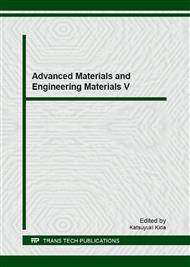p.3
p.11
p.17
p.22
p.27
p.34
p.39
p.44
p.49
Comparative Research on the Quality of Micro Hole in Superalloy GH2135 and Stainless Steel 420J1 by Laser Processing
Abstract:
Both superalloy GH2135 and stainless steel 420J1 were used as test materials to be processed by LASERTEC 80 PowerDrill three-dimensional solid laser processing center. The microstructure of the hole was investigated by super depth of field microscope and laser scanning microscope. The front and back orifice diameter, orifice deposits and thermal effect of accumulation zone were studied. The single factor test method was used to study the influence of pulse energy, pulse width and repetition frequency on the quality of micro holes. The results showed that the front and back diameter of the holes all increase with the increase of pulse energy from 0.4J-3.9J. And the front and back aperture are increase with the increase of pulse width from 0.9ms-1.9ms. Meanwhile, the variation of the aperture and pore taper is more noticeable with the repetition frequency changed from 10Hz-60Hz. The results revealed that pulse energy is one of the biggest influence factors, large pulse energy can lead to small hole taper within a certain range, and short pulse width can reduce orifice debris and splash. Both the recast layer and microcrack were existed in the two kinds of metal materials. The quality of holes drilling in GH2135 is better than 420J1.
Info:
Periodical:
Pages:
27-33
Citation:
Online since:
August 2016
Authors:
Price:
Сopyright:
© 2016 Trans Tech Publications Ltd. All Rights Reserved
Share:
Citation:


